
|
(1) Reaction interval
Individuals subjected to this test were asked to operate a driving simulator, when sober and after consuming alcohol, following the car shown on the monitor, and were told to push different-colored buttons when lamps of corresponding colors lit up. Two types of this test (Test A and Test B) were conducted to see the multiple choice response agility.6
|
|
|
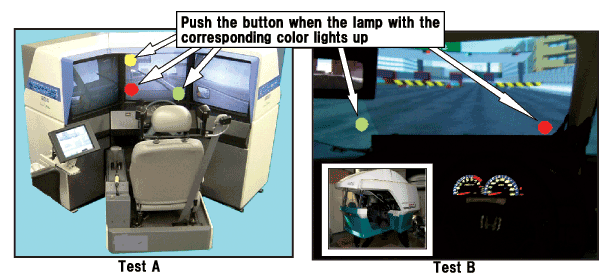
|
|
The figures shown below indicate the distribution of reaction intervals and number of button-pushing times for all subjects. Total number of times is indicated on the vertical axis and intervals between the lighting-up and
button-pushing actions are shown on the horizontal axis.
Each test indicates that response intervals were longer after alcohol was consumed. When under the influence of alcohol, response intervals did not vary noticeably in accordance with breath alcohol concentration.
Response intervals apparently become uniformly longer with drinking. Drinking seems to lengthen the time interval between the perception of danger and the onset of corresponding action.7 8
|
|
|
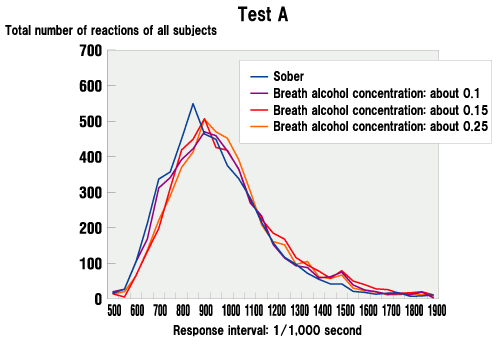
|
|
| |
|
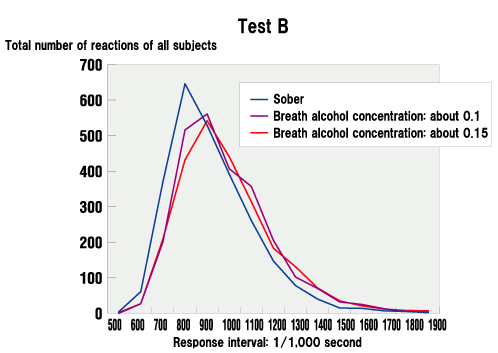
|
|
|
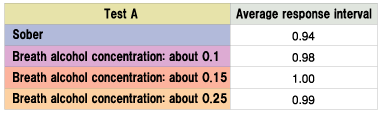
|

|
|
(2) Driving behavior
Also tested was how drinking affects manipulation of the steering wheel and accelerator. Data on steering wheel angle and acceleration was taken from nine test subjects.
After drinking, several subjects showed a tendency to turn the steering wheel at a larger angle, or step on the accelerator harder, compared with the time when they were sober. There was no noticeable tendency common to all subjects, but many tended to manipulate the steering wheel and the accelerator in an excessive way after consuming alcohol.
|
| |
|
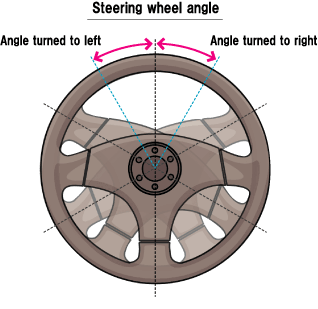
|
|
|
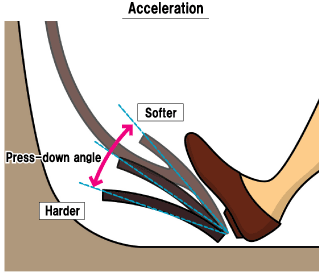
|
|
|
UP
Back
|
